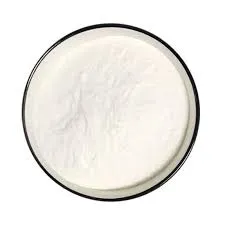
Nov . 09, 2024 11:26 Back to list
Applications and Benefits of Hydroxyethyl Cellulose in Various Industries
Exploring the Uses of Hydroxyethyl Cellulose
Hydroxyethyl cellulose (HEC) is a water-soluble polymer derived from cellulose, a natural polymer that is one of the most abundant organic compounds on Earth. HEC has garnered significant attention in various industries due to its unique properties, such as its thickening, gelling, and film-forming capabilities. As a result, its applications span across diverse fields including pharmaceuticals, cosmetics, food production, and construction.
In the pharmaceutical industry, HEC plays a crucial role as an excipient in drug formulations. Its ability to modify the viscosity and stability of solutions allows for improved drug delivery systems. HEC is often used in the preparation of suspensions, gels, and controlled-release formulations. It aids in enhancing the bioavailability of active pharmaceutical ingredients (APIs) and ensuring their uniformity in dosage forms. Moreover, its biocompatibility makes it suitable for use in ocular, topical, and injectable pharmaceutical forms.
Exploring the Uses of Hydroxyethyl Cellulose
In the food sector, hydroxyethyl cellulose serves as a functional ingredient that improves food texture, stability, and shelf life. It is often used as a thickening agent in sauces, dressings, and processed foods, enhancing mouthfeel and viscosity without adding unwanted flavors. Furthermore, HEC is utilized in gluten-free baking applications, helping to improve the elasticity and structure of dough. Its ability to retain moisture and form gels aids in creating appealing textures in various food products, making HEC a valuable component in modern cuisine.
hydroxy ethyl cellulose uses

The construction industry has also recognized the value of hydroxyethyl cellulose. HEC is used as a thickening agent in cement-based materials, such as mortars and adhesive pastes. Its properties improve workability, allowing for better adhesion and application of construction materials. Moreover, HEC enhances the water retention of these materials, which is crucial for achieving optimal curing and setting conditions. This results in improved mechanical strength and durability in construction applications.
Another area where hydroxyethyl cellulose is making strides is in the realm of personal care and household products. HEC is commonly found in cleaning agents, laundry detergents, and fabric softeners, where it functions as a viscosifier and stabilizer. Its inclusion in these products helps maintain an even distribution of active ingredients while enhancing the overall viscosity for better performance during application.
Despite its widespread use, hydroxyethyl cellulose is considered to be safe and non-toxic, making it an attractive option for formulation chemists across various industries. However, as with any ingredient, it is important to consider the specific formulation requirements and best practices to optimize its benefits.
In conclusion, hydroxyethyl cellulose is a multifunctional ingredient with diverse applications that span across pharmaceuticals, cosmetics, food production, construction, and personal care products. Its exceptional properties of thickening, stabilizing, and gelling make it an invaluable asset to formulators and manufacturers, driving innovation and enhancing performance across various sectors. As research continues to explore its potential, the future of HEC appears promising, paving the way for new and exciting applications that can further benefit both consumers and industries alike.
-
Versatile Hpmc Uses in Different Industries
NewsJun.19,2025
-
Redispersible Powder's Role in Enhancing Durability of Construction Products
NewsJun.19,2025
-
Hydroxyethyl Cellulose Applications Driving Green Industrial Processes
NewsJun.19,2025
-
Exploring Different Redispersible Polymer Powder
NewsJun.19,2025
-
Choosing the Right Mortar Bonding Agent
NewsJun.19,2025
-
Applications and Significance of China Hpmc in Modern Industries
NewsJun.19,2025







